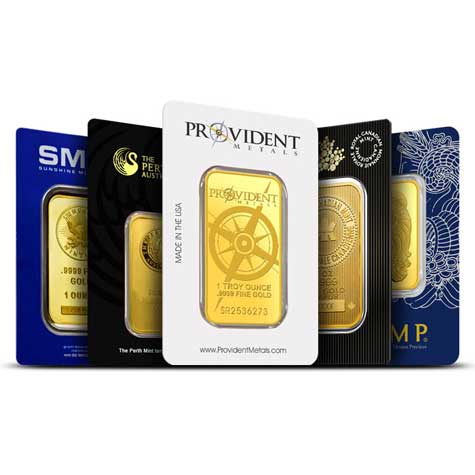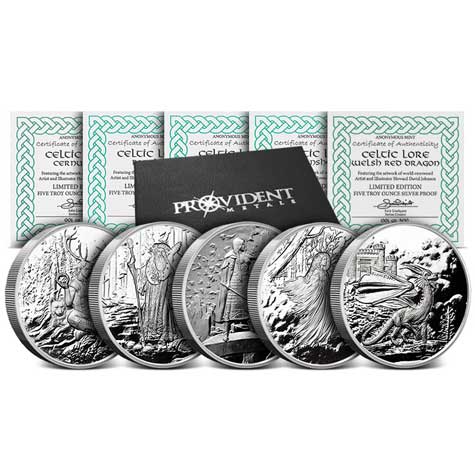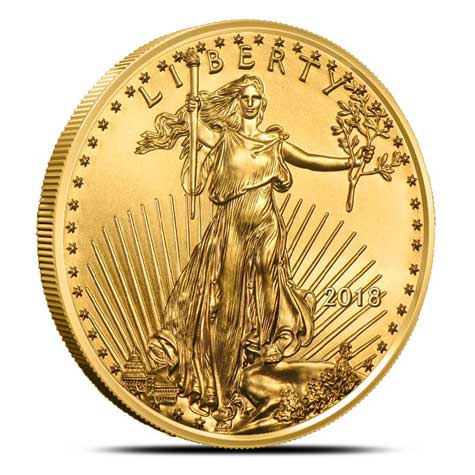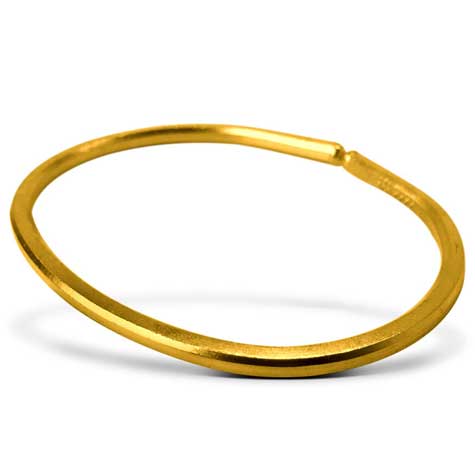What is Gold and Silver Bullion?
The definition and explanation of bullion: what it is, why it’s important, and different types
If you’ve been considering making an investment in physical gold or silver, you have likely seen the word “bullion” thrown around quite a bit in reference to the precious metals market. For new precious metals investors, specialized terminology such as this can be a bit confusing and overwhelming in the beginning.
Find everything you need to know below about what the term bullion means, why it’s important to precious metal investors, and what forms it comes in.
What Exactly is Bullion?
In the financial sector, “bullion” effectively refers to the content of precious metal in a bar, coin, round, or some other form. Bullion is most often discussed as raw metal, but it can also refer to metal that has been processed into an object, as in the case of a gold, silver, or platinum coin.
The bullion content of an object is usually measured by multiplying the weight of the object in troy ounces by the purity of the metal in that object. For instance, a 1-ounce gold bar with a .9999 purity rating would contain one troy ounce of 99.99 percent pure gold bullion.
(For those unfamiliar with the term, a troy ounce is a special unit of weight measurement used predominantly for precious metals. One troy ounce is equal to 1.09714 standard ounces, making the difference between the two fairly small, but still important to understand.)
Why is Bullion Important to Investors?
For precious metals investors, the precise bullion content of an object is important because spot prices of metals are measured by unit weight. Without knowing the actual bullion content of a given piece of metal, calculating its value in the current market is impossible. For this reason, all forms of bullion that are meant as investment-grade precious metal pieces are stamped with both weight and purity markings that allow investors to easily ascertain the amount of metal in them.
What are the Different Types of Bullion?
As mentioned above, gold and silver bullion can come in several different forms. There are many stores of precious metal, such as jewelry, that are valuable but not meant for investment purposes. In many cases, these objects still have plenty of bullion value, but won’t have the exact weight and purity markings that the following investment-grade bullion items have.

Bars
One of the most familiar and simple stores of precious metal is the bullion bar. Bars of gold and silver come in all sizes, from 1-gram gold bars to silver bars that weigh as much as 100 ounces. The most popular bars are usually 1-ounce gold bars and 1-ounce silver bars due to their affordability, but other weights are also popular, especially when it comes to silver. The advantages of bars is that they are easily stackable and typically have a lower premium over spot.

Rounds
Rounds are similar to coins, except for the fact that they bear no face value and aren't minted as legal tender by any government. Most investment-grade rounds are made of silver or copper, but there are a few gold rounds, such as the Incuse Indian 1-ounce gold round. Silver rounds come in a wide range of different designs, making them great fun to collect and invest in. Some of the most popular silver round designs include the Sobek 2-ounce extra high relief round and the Celtic Lore series of 5-ounce silver rounds.
Coins
Bullion coins made of gold or silver have always been popular as stores of precious metal. In fact, prior to the ending of regular circulation gold coin production in 1933 and the elimination of circulating silver coins in 1965, the face value of a coin was assumed to be reflective of its bullion content, rather than an arbitrarily designated value. Although the US Mint no longer produces these coins for regular circulation, it does still make special investment-grade gold and silver coins. The American Gold Eagle and Silver Eagle coins are the most prominent example of these special issues in the US. Other countries issue similar investment-grade bullion coins, such as the Australian Silver Kangaroo and the Canadian Gold Maple Leaf.

Irregular Bullion
Although most bullion investments come in standard forms—rounds, coins, or bars—there are also irregular pieces that contain investment-grade gold or silver. Items such as silver figurines, granular silver, and even gold jewelry can have value as bullion investments. If you plan to invest in these irregular forms of bullion, however, be sure that you are fully aware of the exact weight and purity, since these pieces of information will be crucial if you ever want to liquidate your investments.
If you're considering investing in gold and silver, any type of investment-grade bullion can be a good choice for your first step into the world of precious metals. At Provident Metals, we carry many different types of gold and silver bullion, as well as other precious metal investments. If you want to get started with investing in precious metals, browse our extensive selection of physical metal investments to find the assets that are right for your portfolio.
Continue reading: Provident Metals Glossary





